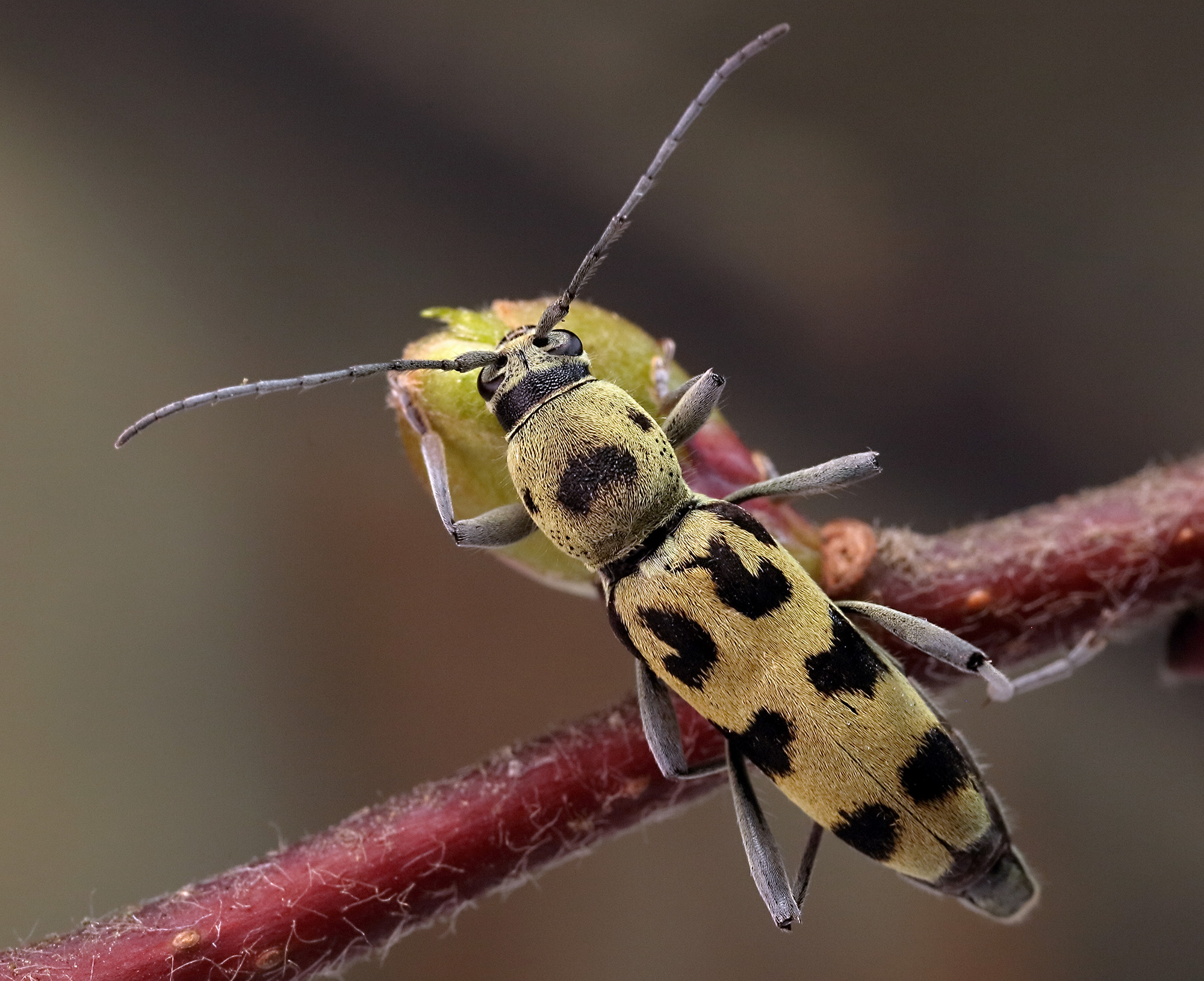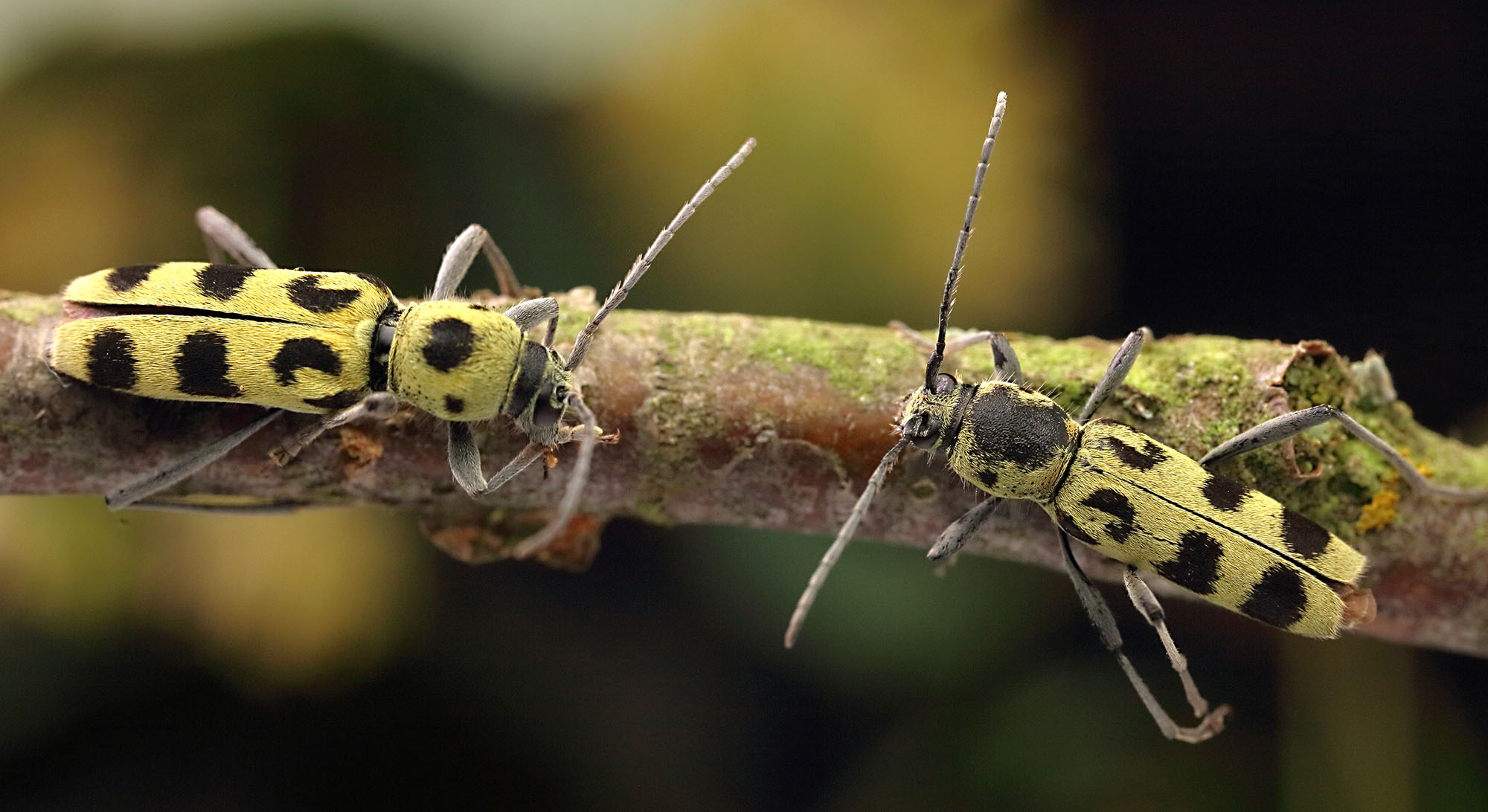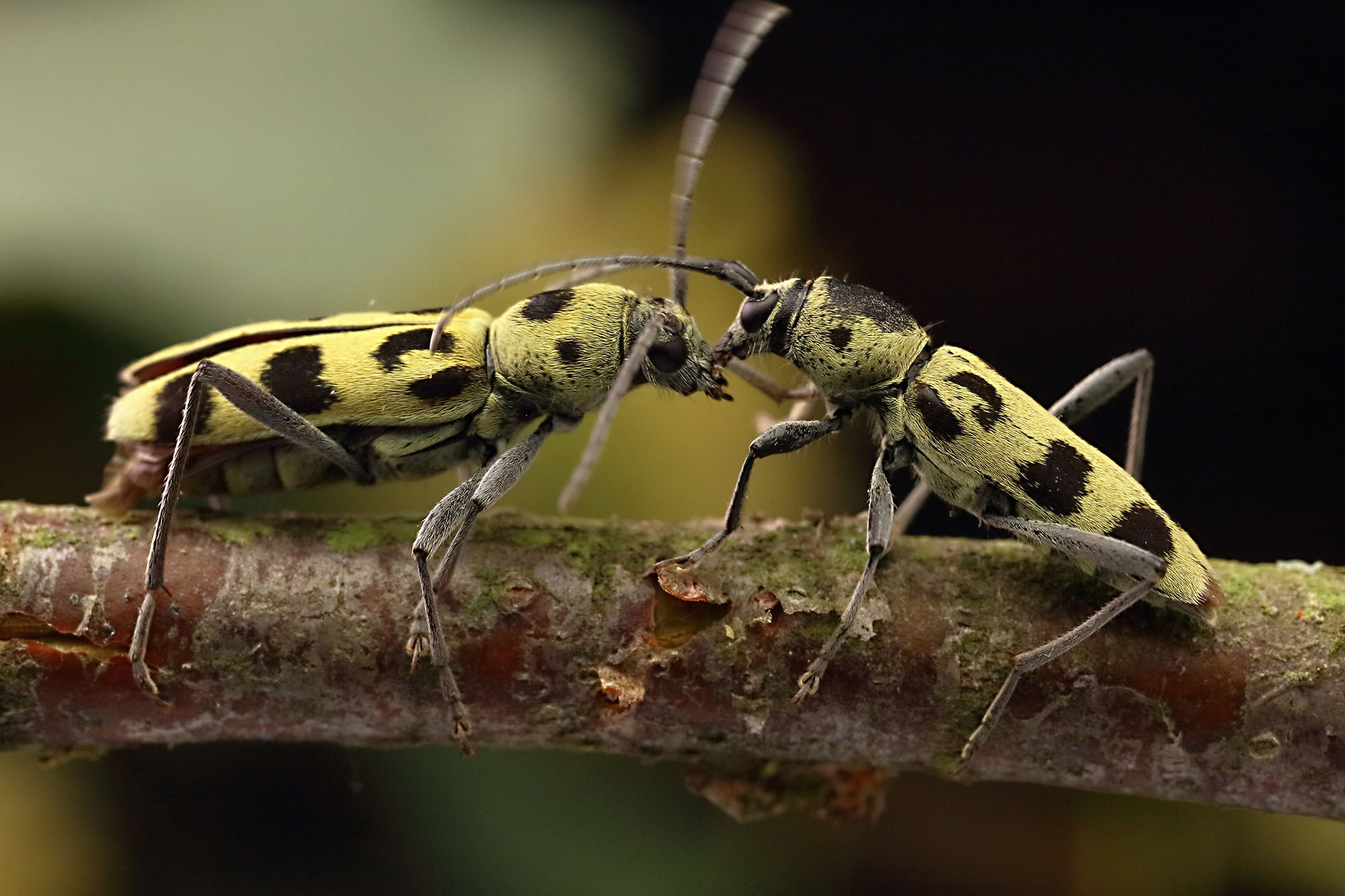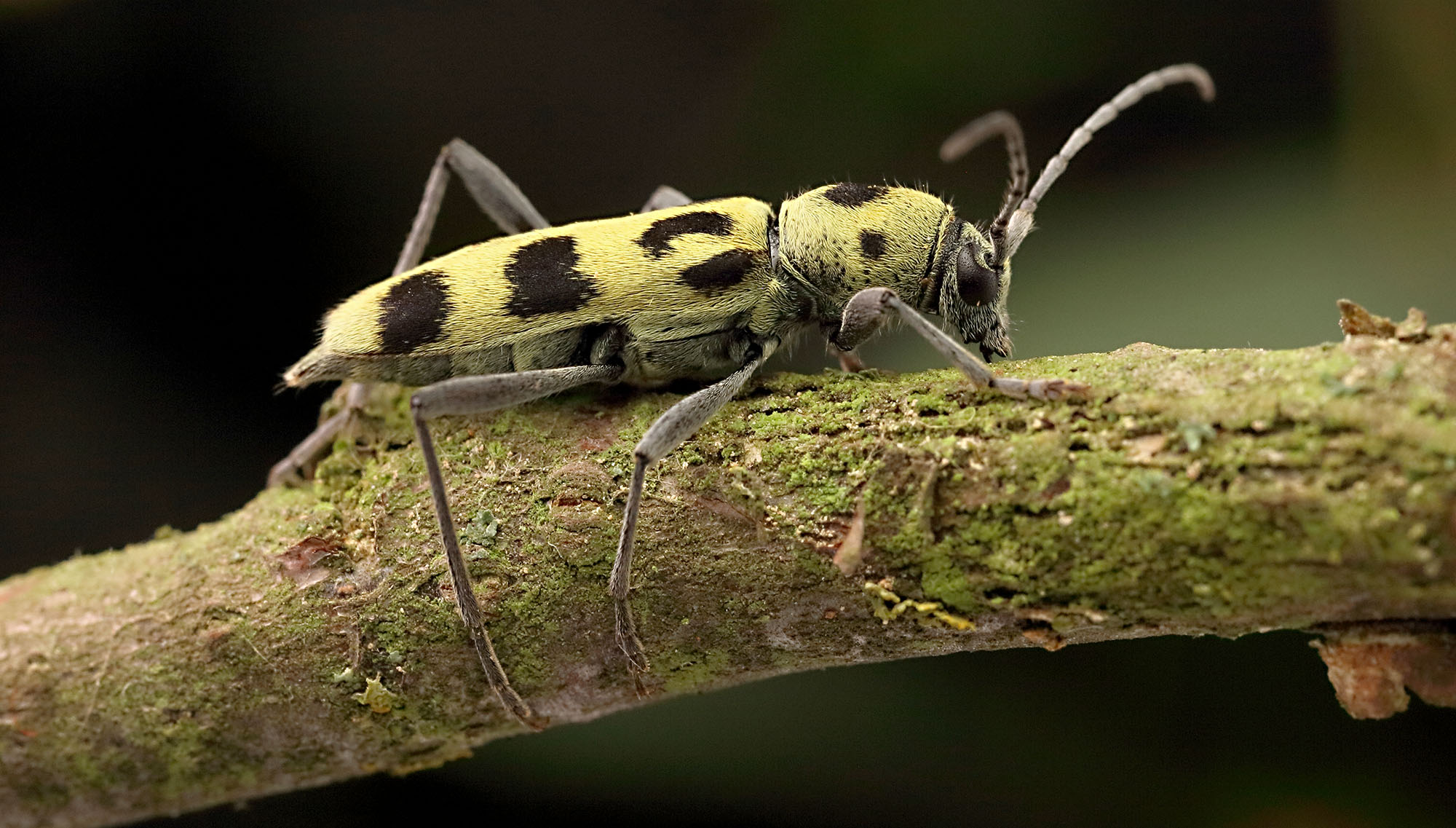Subfamilia: CERAMBYCINAE / Tribus: CLYTINI

[Photo © Milan Lovětínský]
Chlorophorus herbsti, a species with an extensive range from Siberia to the Atlantic, inhabits mixed deciduous forests of lower and middle elevations, lime (Tilia) alleys and parks with old trees. Development of larvae under the bark and in wood weakened or freshly dead branches and trunks of deciduous trees (in Central Europe lime is preferred) of various diameters (5 - 35 cm). The larvae create irregular galleries, which often alternately penetrate the wood and protrude under the bark. Before pupation, the larva creates an exit opening, which is usually closed by a thin layer of intact wood, or is clogged with sawdust, sometimes it is opened under the bark. Overwinters larva, pupation in spring with overal life-cycle 2-3 years. Adults, active in June - July, can be found mainly on wood, less often on flowers (especially Aruncus).
Body length: 8 - 15 mm Life cycle: 2 - 3 years Adults in: June - August Host plant: polyphagous in deciduous trees (Tilia, Fagus, Carpinus, Quercus) Distribution: Europe, Turkey, Russia
The depicted beetles were reared from larvae collected in a dead (Tilia sp.) in Křivoklátsko Protected Landscape Area (Central Bohemia, Czechia).Collected by Miroslav Polcar




[Photo © Milan Lovětínský]

[Photo © Milan Lovětínský]
| Subfamilia | Cerambycinae Latreille, 1802 |
| Tribus | Clytini Mulsant, 1839 |
| Genus | Chlorophorus Chevrolat, 1863 |
| Species | Chlorophorus herbsti (Brahm, 1790) |
